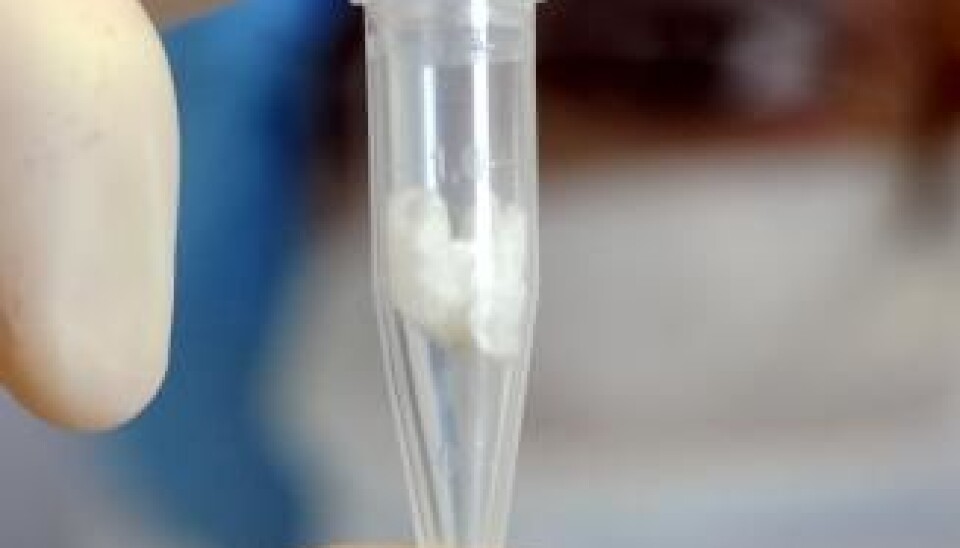
Danes locate the source of cholera in Haiti
It was Nepalese soldiers who brought cholera with them to Haiti after the January 2010 earthquake, researchers have established. The ensuing cholera outbreak killed 6,000 people and made 400,000 ill.
In January 2010, Haiti was struck by a powerful earthquake in which 300,000 people lost their lives. The situation for the survivors was greatly worsened by a severe outbreak of cholera.
The outbreak is now under control, although people are still falling ill. Thus far, almost 400,000 people have been affected by the disease, from which some 6,000 have died.
Researchers from Denmark's Technical University (DTU) and TGen (Translational Genomics Research Institute, Arizona, USA) have discovered that the cholera came from Nepal, likely brought to Haiti by Nepalese soldiers involved in the relief work.
The findings have just been published in mBio, a new online magazine, a collaborative effort of the American Society of Microbiology and the American Academy of Microbiology.
"Our research will not just be used to look retrospectively at incidents like Haiti," says Professor Frank Møller Aarestrup of the DTU Foods Institute.
"In the future, we need to take more preventive measures in the event of outbreaks of disease. Infectious bacteria like cholera have a tremendous impact on the populations of disaster areas, especially when the infrastructure has been destroyed.
We are now seeing the same on the Horn of Africa. I would recommend that in future, we examine people for contagious diseases before deploying them to a sensitive area"
Cholera is widespread in Nepal
The researchers from DTU and TGen sequenced the entire DNA of the cholera strain to determine whether it was the same as the one found in Nepal. They examined the DNA of 24 different cholera samples from Nepal and compared them with the DNA from 10 different cholera samples from Haiti.
The samples proved to be almost identical, leading the researchers to conclude that the Haitian cholera had been brought from Nepal by Nepalese soldiers participating in the relief work.
Cholera is widespread in Nepal and there was already speculation that the cholera may have come from there when the outbreak started shortly after their arrival. This has now been confirmed.
"We have no intention of pointing a finger at the Nepalese; however, our partners in Nepal turned to us because they were not able to establish whether the cholera outbreak in Haiti actually stemmed from the Nepalese relief workers as many had speculated.
One should remember that riots and demonstrations occurred on the background of the cholera outbreak," explains Aarestrup.
The same technique was used to find the source of the anthrax letters in 2001
One of the researchers behind the survey is Professor Paul Keim from Northern Arizona University, who was involved in pioneering the use of DNA sequencing to find the source of outbreaks of infection. The method proved its worth in connection with letters containing anthrax which killed five people in 2001.
In connection with the anthrax letters, Keim assisted the FBI in its investigation to find sources. The same technique was used in connection with the cholera outbreak in Haiti.
The technique substantially reduces the cost of carrying out a full DNA profile of contagious diseases, which facilitates its use in cases of new outbreaks of disease.
The technique breaks down DNA into tiny pieces, which are put back together again by a computer to produce a full DNA profile. This way it is possible to make an extremely precise comparison of two different bacteria and ascertain whether or not they are identical. Previously, only pieces of the DNA were compared, which is a much less precise method.
"The price of full genome sequencing DNA has plummeted," says Aarestrup. "Today, the full DNA profile of a bacteria only costs around $370. We have this option available to us at DTU, as they do at TGen, but in Nepal they do not. In this light it was only natural for us to help them solve the problem."
Better DNA-analyses speed up the job
We live in a globalised world which is getting smaller all the time. People are now able to move quickly from one end of the world to the other, which means that bacteria can follow them at the same speed.
It is therefore necessary to have the possibility of identifying which bacteria come from where, so that we can go back and stop the source from spreading further.
"This is something I am very enthusiastic about. The fact that there is a need for global surveillance of disease outbreaks is not news. We need to know what we have and where before we can react to it.
"Furthermore, it is important that we standardise our information and improve our information exchange to better enable us to compare one strain of bacteria with another and do it more quickly. Full genome sequencing enables us to compare bacteria with absolute precision, and this made it extremely simple to determine whether the cholera bacteria in Haiti had its origins in Nepal," says Aarestrup.
Read the article in Danish at videnskab.dk





